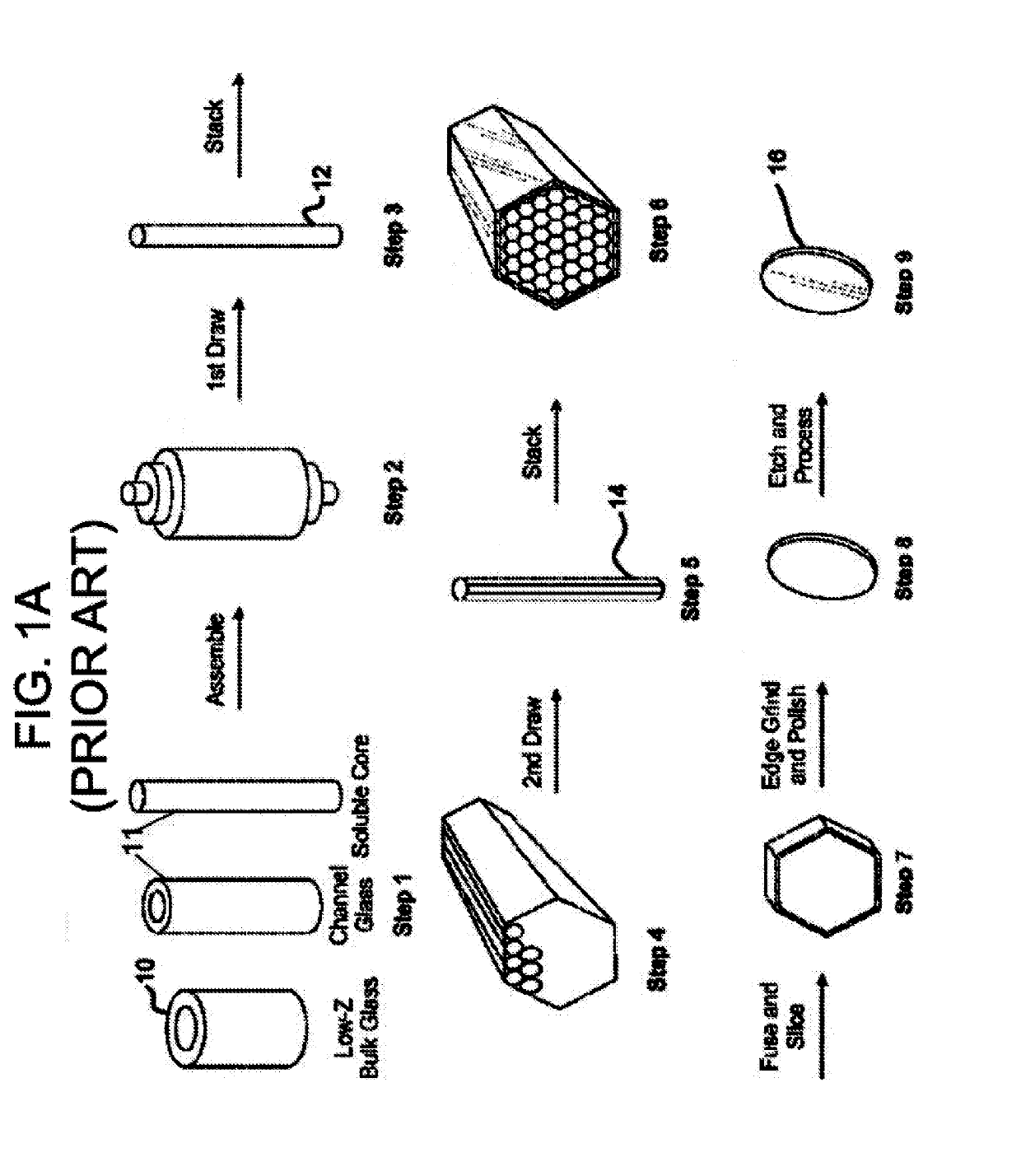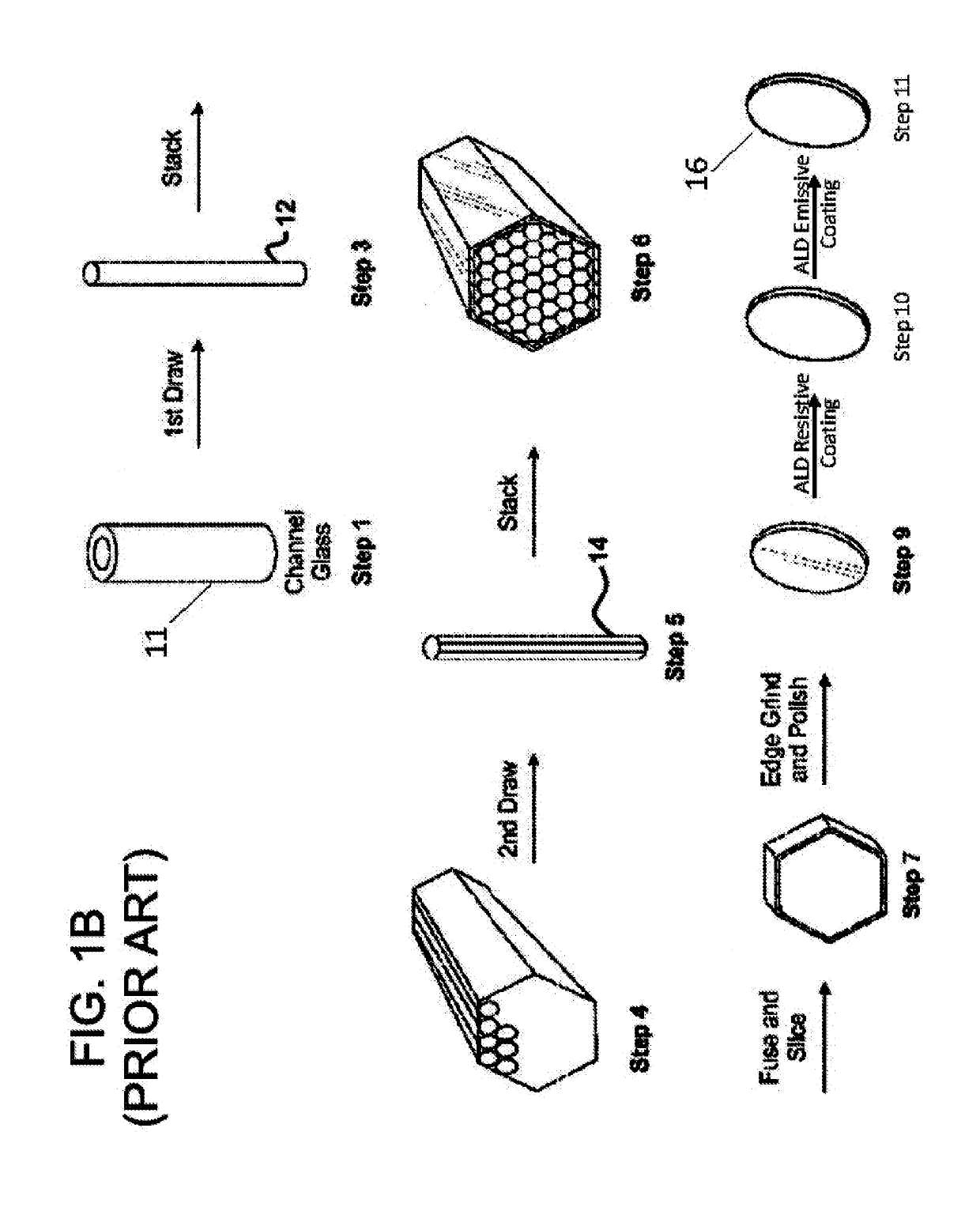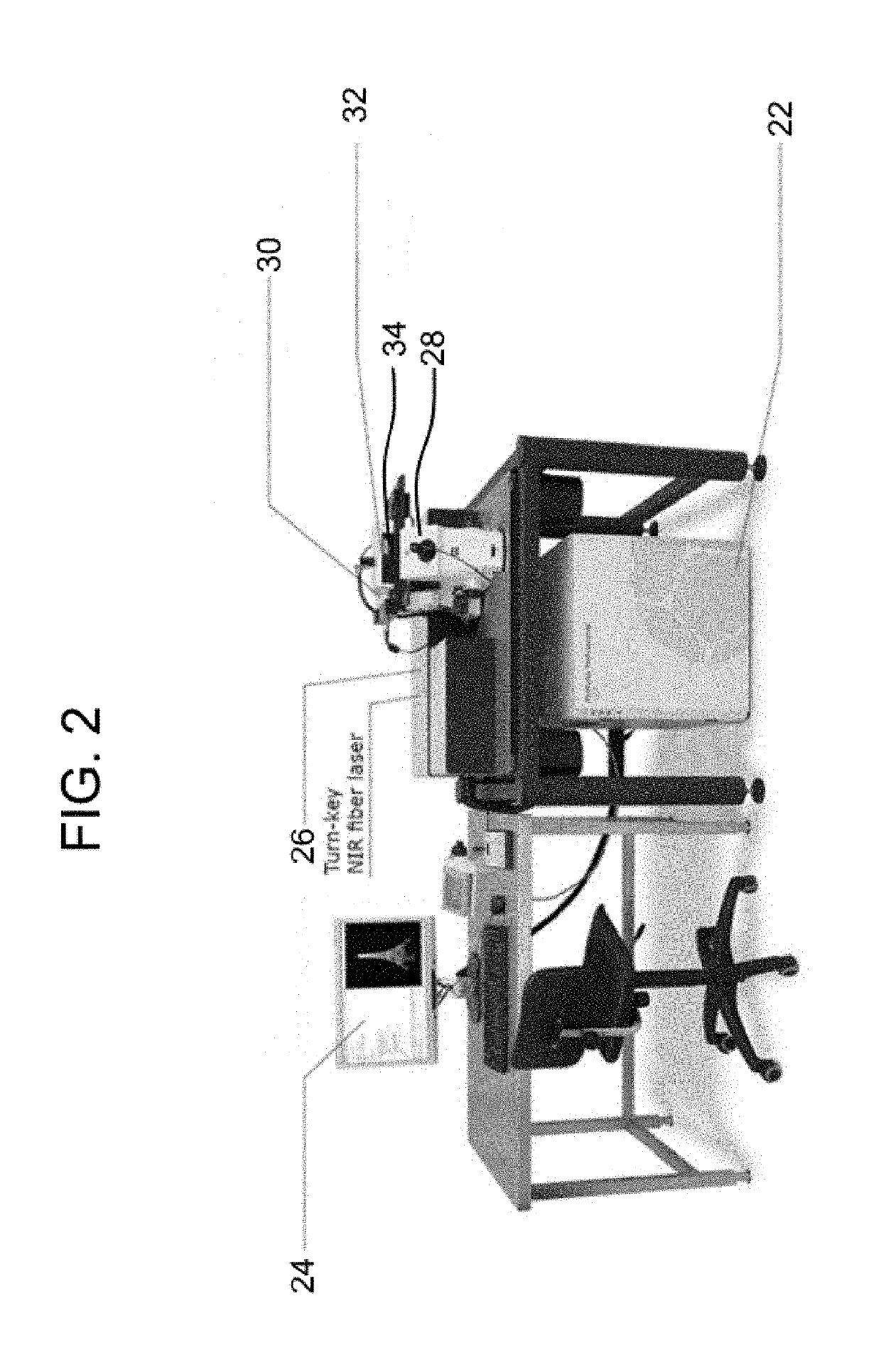3D printed micro channel plate, method of making and using 3D printed micro channel plate
a microchannel plate and microchannel technology, applied in the field of microchannel arrays, can solve the problems of inability to meet the needs of skilled artisans, time and effort-intensive process, prohibitive costs, etc., and achieve the effects of reducing time needed, improving quality, and improving efficiency
- Summary
- Abstract
- Description
- Claims
- Application Information
AI Technical Summary
Benefits of technology
Problems solved by technology
Method used
Image
Examples
example 1
[0091]The second 3D printed, functionalized MCP was tested in a large vacuum phosphor screen equipped test chamber. In this test, ultraviolet light was used to illuminate the 3D printed, functionalized MCP directly which produced electrons that were multiplied in the 3D printed MCP. Additional gain was provided by use of a large 8″×8″ MCP purchased from Incom, Inc. of Charlton Mass. that was functionalized via the ALD protocol discussed above used in the phosphor chamber such that electrons exiting the 3D printed MCP entered the larger MCP, were gain multiplied, and then imaged by a subsequent phosphor screen.
[0092]In FIG. 12, the circle indicates the location of the MCP in example 1. A mercury vapor lamp was used to produce UV light that liberated electrons from the gold electron of the functionalized MCP. A bias voltage of 1000V was applied across the 0.9 mm thickness of the MCP to accelerate the electrons through the MCP. The electrons struck the channels' walls as they traverse ...
example 2
[0093]In a small vacuum test chamber, a 33 mm diameter MCP was used to produce electrons that were then multiplied in one of the 3D printed, functionalized MCPs. Evidence of gain production is in the form of an image of the multiplied electron cloud on a phosphor screen as shown in FIG. 12 and a measurement of the relative gain versus bias voltage applied to the MCP.
[0094]FIG. 13 shows the relative gain of a 3D printed MCP versus bias voltage applied to the MCP in Example 2. The top curve shows the electron current as the 3D printed MCP bias is varied with the standard MCP voltage held constant at 1400V. The bottom curve shows the current as the standard MCP voltage is varied with the 3D printed MCP bias voltage held at 1300V. The top curve shows the gain produced by the 3D printed MCP increasing by a factor of approximately 500 as the voltage increases from 200V to 1400V.
[0095]It is to be understood that the above description is intended to be illustrative, and not restrictive. For...
PUM
| Property | Measurement | Unit |
|---|---|---|
| Fraction | aaaaa | aaaaa |
| Time | aaaaa | aaaaa |
| Thickness | aaaaa | aaaaa |
Abstract
Description
Claims
Application Information
 Login to View More
Login to View More - R&D
- Intellectual Property
- Life Sciences
- Materials
- Tech Scout
- Unparalleled Data Quality
- Higher Quality Content
- 60% Fewer Hallucinations
Browse by: Latest US Patents, China's latest patents, Technical Efficacy Thesaurus, Application Domain, Technology Topic, Popular Technical Reports.
© 2025 PatSnap. All rights reserved.Legal|Privacy policy|Modern Slavery Act Transparency Statement|Sitemap|About US| Contact US: help@patsnap.com



